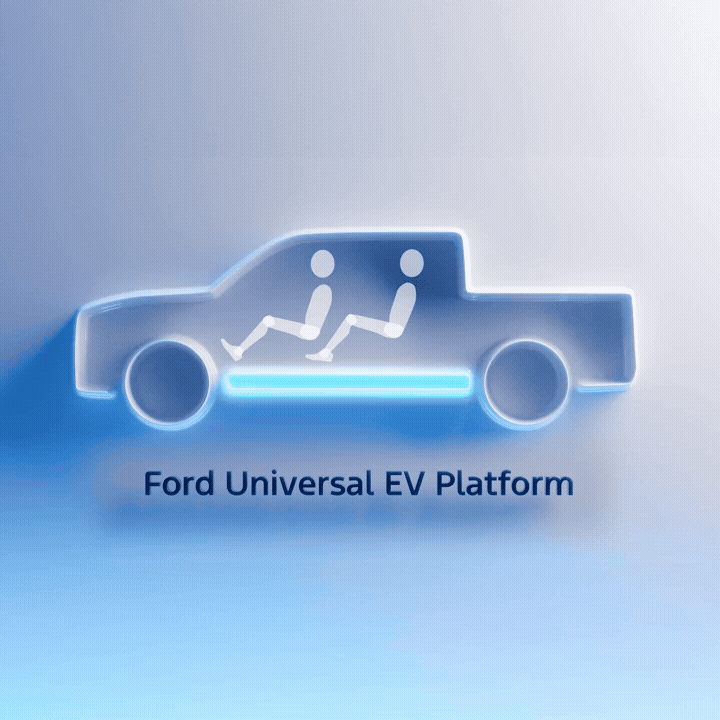
Ford invented the modern vehicle assembly line as we know it for the Model T, the so-called ‘Universal Car’. Now the brand was to radically change how cars are made, introducing a new ‘assembly tree’ and a new range of vehicles built off a singular, modular and simpler electric platform.
Announcing a US$5 billion ($7.5b) investment in its Louisville Assembly Plant and BlueOval Battery Park in Michigan, Ford has committed its manufacturing future in America amid the ongoing global trade wars.
Ford President and CEO Jim Farley said this new approach, which will see the one platform used for multiple vehicles will allow the company to offer cheaper EVs to customers and better take the fight to both Tesla and the emerging Chinese brands.
The first product of this new strategy, dubbed ‘The Universal Vehicle’ in a nod to the Model T, will be a new four-door electric pickup that will be “as fast as a Mustang EcoBoost” and have “more passenger space than the latest Toyota RAV4” for a starting price of “about $30,000” when it arrives in 2027. That would position this new electric ute as a direct rival to Ford’s current ‘compact pickup’ the Maverick, which starts at just below US$30,000 and is based on the Ford Escape SUV platform.

Crucially, however, the pickup would just be the first of many models to all share this new, more simplified platform. While not confirming future models, Ford’s graphic showed silhouettes for both two and three row SUVs as well as what appear to be a pair of commercial vans.
This new strategy will utilise new lithium iron phosphate (LFP) prismatic batteries, which Ford claims are smaller and lighter, as well as cheaper. The new Ford Universal EV Platform (as it is officially known) will, according to the company, reduce parts by 20 per cent, require 40 per cent fewer work stations in the plant and be 15 per cent faster to assemble. As a specific example, Ford said the wiring harness for the new mid-size pickup will be 1.3km shorter and 10kg lighter than its first generation EV SUV.

“We took a radical approach to a very hard challenge: Create affordable vehicles that delight customers in every way that matters – design, innovation, flexibility, space, driving pleasure, and cost of ownership – and do it with American workers,” Farley said
“We have all lived through far too many ‘good college tries’ by Detroit automakers to make affordable vehicles that ends up with idled plants, layoffs and uncertainty. So, this had to be a strong, sustainable and profitable business. From Day 1, we knew there was no incremental path to success. We empowered a tiny skunkworks team three time zones away from Detroit. We tore up the moving assembly line concept and designed a better one. And we found a path to be the first automaker to make prismatic LFP batteries in the U.S.”
The new ‘assembly tree’ will see Ford ditch the single production line concept that it has used since the Model T. It replaces it with three sub-assemblies that run down separate lines and then converge towards the end of the process into a single line to finish the vehicle.

“We took inspiration from the Model T – the universal car that changed the world,” explained Doug Field, Ford chief EV, digital and design officer. “We assembled a really brilliant collection of minds across Ford and unleashed them to find new solutions to old problems. We applied first‑principles engineering, pushing to the limits of physics to make it fun to drive and compete on affordability. Our new zonal electric architecture unlocks capabilities the industry has never seen. This isn’t a stripped‑down, old‑school vehicle.”
It’s unclear when, or even if, any of these EV models will make it to Australian showrooms, with Ford yet to even formally confirm a launch date for the electric pickup let alone any of the models beyond it.
But, with so much money and resources invested, Ford is staking a large part of its future both in the US and globally on making The Universal Vehicle as successful as the Model T was more than 100 years ago.











Discussion about this post